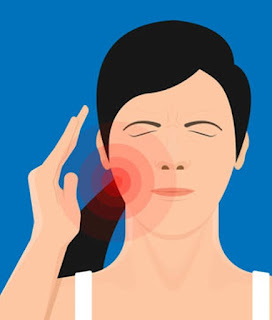Stroke Among SARS-CoV-2 Vaccine Recipients: cases with unusual presentation
Multiple case reports describing stroke after COVID-19 vaccination have been published in medical literature. Some had unusual presentations.
A 43‐year‐old male patient with uneventful medical history was admitted 23 days after receiving a first dose of ChAdOx1 nCoV‐19 vaccine. Symptoms of headache, falls, and unsteadiness began 7 days after vaccination. At admission, he presented with reduced vigilance, multiple blue, or purple bruises in all extremities and left‐sided hemiparesis. The bruises had the typical clinical characteristics of hematomas after subcutaneous bleeding and were painful, reflecting their extent, location, redness in a limb, or pallor and coldness in a limb. Brain death was confirmed 31 days after vaccination. The autopsy revealed a widespread thrombosis of the superior sagittal sinus, transverse sinus, and confluence of sinuses with patchy hemorrhagic infarction and global cerebral edema, leading to tonsillar herniation. Additionally, disseminated thrombosis of small and medium‐sized vessels was identified at autopsy.
A 34‐year‐old male patient with uneventful medical history was admitted with a 1‐week history of shortness of breath, hemoptysis, chills, headache, and a low platelet count 12 days after the first dose of ChAdOx1 nCoV‐19 vaccine. The symptoms began 7 days after vaccination. His physical examination on admission showed no abnormalities except for a respiratory rate of 33 breaths per minute. He was negative to SARS-Cov2. A chest CT scan revealed pulmonary embolism and widespread ground‐glass opacities. Abdominal CT scan showed complete portal and mesenteric vein thrombosis. Duplex Doppler sonography of the leg vessels indicated deep vein thrombosis. Abdominal ultrasonography showed slight splenomegaly but no further pathology. Magnetic resonance imaging (MRI) angiography showed no pathology other than a small cavernoma (see Figure on the left). Vaccine‐induced immune thrombotic thrombocytopenia was suspected and confirmed by a strongly positive anti‐PF4/heparin IgG ELISA and a positive PF4‐dependent platelet activation assay. Intravenous levofloxacin was started because of suspected community‐acquired pneumonia. The patient was discharged 20 days after admission.
 25-year-old male presented to the emergency department with severe headache and vertigo lasting for 3 days. The patient did not have a recent history of trauma. He was vaccinated with a second dose of the AstraZeneca COVID-19 vaccine ~1 month prior, and he suffered from a vitamin B12 deficiency due to nitrous oxide abuse. A diagnosis of cerebral sinovenous thrombosis (CSVT) was made. After 7 days of treatment, his headache and quadrantanopia were improved, and the patient was discharged.
25-year-old male presented to the emergency department with severe headache and vertigo lasting for 3 days. The patient did not have a recent history of trauma. He was vaccinated with a second dose of the AstraZeneca COVID-19 vaccine ~1 month prior, and he suffered from a vitamin B12 deficiency due to nitrous oxide abuse. A diagnosis of cerebral sinovenous thrombosis (CSVT) was made. After 7 days of treatment, his headache and quadrantanopia were improved, and the patient was discharged.
A 60-year-old Danish woman was admitted with intractable abdominal pain 7 days after receiving the adenoviral (ChAdOx1 or (AZD1222)) vector based COVID-19 vaccine. During admission, blood tests showed a remarkable drop in platelet counts from 118,000 to 5000 per μl and a substantial increase in D-dimer. The patient died on the sixth day of hospitalization. Blood tests revealed platelet factor 4 reactive antibodies, imitating what is seen in heparin-induced thrombocytopenia.
56 cases of stroke following vaccination were described in Mexico, between December 24, 2020, and August 31, 2021. Overall incidence was 0.71 cases per 1,000,000 administered doses, median age was 65 years (interquartile range 55-76); median time from vaccination-to-stroke (of any subtype) was 2 days (interquartile range 1-5); in 27 (48.2%) patients, the event was diagnosed within the first 24 hours following immunization. The most frequent subtype was Acute ischemic stroke (AIS) in 43 patients, followed by intracerebral hemorrhage (ICH) in 9, and SAH and CVT, each with 2 cases. Overall, the most common risk factors were hypertension in 33 (58.9%) patients and diabetes mellitus in 22 (39.3%); in-hospital mortality rate was 21.4%. It was a retrospective study analyzing stroke incidence among recipients of 79,399,446 doses of 6 different SARS-CoV-2 vaccines (BNT162b2, ChAdOx1 nCov-19, Gam-COVID-Vac, CoronaVac, Ad5-nCoV, and Ad26.COV2-S).
REFERENCES
Edmonds R, Schönborn L, Habben S, Paparoupa M, Greinacher A, Schuppert F. Vaccine-induced immune thrombotic thrombocytopenia (VITT) after SARS-CoV-2 vaccination: Two cases from Germany with unusual presentation. Clin Case Rep. 2023 Jan 20;11(1):e6883. doi: 10.1002/ccr3.6883. PMID: 36698527; PMCID: PMC9859986.
López-Mena D, Garcí-a-Grimshaw M, Saldivar-Dávila S, Hernandez-Vanegas LE, del Mar Saniger-Alba M, Gutiérrez-Romero A, Carrillo-Mezo R, Valdez-Ruvalcaba HE, Cano-Nigenda V, Flores-Silva FD, Cantú-Brito C. Stroke Among SARS-CoV-2 Vaccine Recipients in Mexico: A Nationwide Descriptive Study. Neurology. 2022 Mar 11.
Lin SS, Fan IW, Chen CY, Su YJ. A nitrous oxide abuser presenting with cerebral venous thrombosis: A case report. Med Int (Lond). 2022 Jun 7;2(3):20. doi: 10.3892/mi.2022.45. PMID: 36698503; PMCID: PMC9829206.
de Mélo Silva Jr ML, Lopes DP. Large hemorrhagic stroke after ChAdOx1 nCoV‐19 vaccination: A case report. Acta Neurologica Scandinavica. 2021 Dec;144(6):717-8.
Blauenfeldt RA, Kristensen SR, Ernstsen SL, Kristensen CC, Simonsen CZ, Hvas AM. Thrombocytopenia with acute ischemic stroke and bleeding in a patient newly vaccinated with an adenoviral vector‐based COVID‐19 vaccine. Journal of Thrombosis and Haemostasis. 2021 Jul;19(7):1771-5.
Cmor N, Dora E, Rajtman D, Tibaut M, Horvat S, Zver J, Lainscak M. Late-post-COVID-19 cerebral venous sinus thrombosis and stroke: a case report. Journal of Cardiovascular Medicine. 2023 Jan 1;24(1):72-4.




Comments
Post a Comment